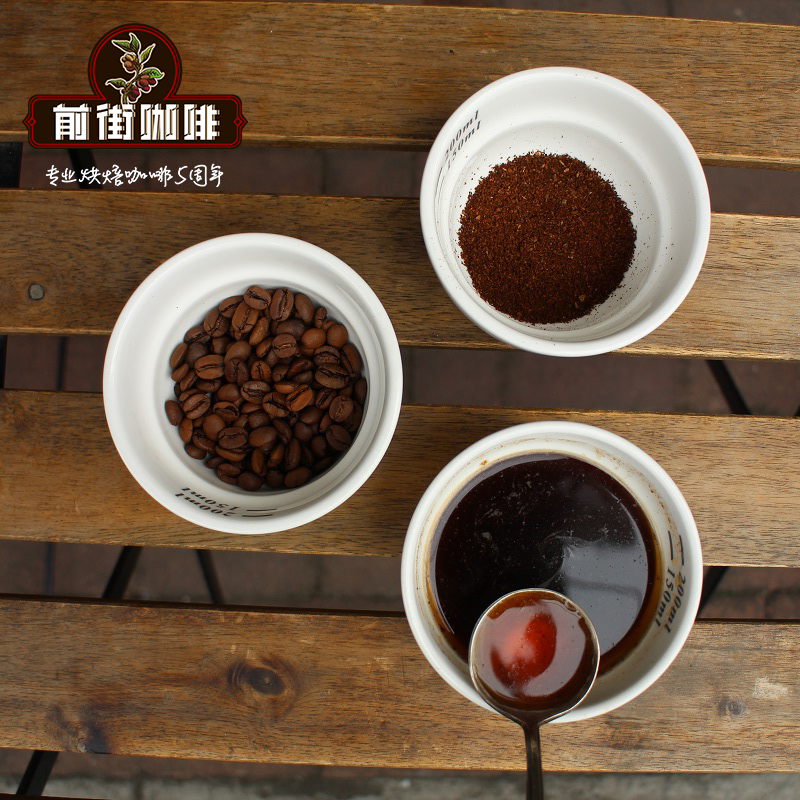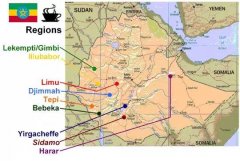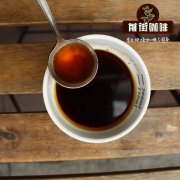The flavor of Kayon Mountain Farm in Kaiyong Mountain, an Ethiopian coffee bean producing area? Such as

Professional coffee knowledge exchange more coffee bean information please follow the coffee workshop (Wechat official account cafe_style)
The flavor of Kayon Mountain Farm in Kaiyong Mountain, an Ethiopian coffee bean producing area? How to wash Guji Sun in Kaiyong Mountain by hand?
Single-farm coffee is rare in Ethiopia, and this Kaiyong Mountain is one of them. Although the flavor of the farm in Guji is similar to that of Sidamo, it is still quite different. The high altitude and complex native species Tibica make this Kaiyong Mountain farm rich in flower and pear flavor, which is very special. This is 49th's last batch of wonderful Ethiopian coffee. The Kaiyong Mountain Farm (Kayon Mountain farm) is located in the southern part of the Guji producing area, near Shakiso Shakiso. The 240-hectare farm, built in 2012, was originally set up to produce top-notch coffee, but with both social and environmental responsibilities.
The local people of Guji are Guji Oromo, and coffee is the core crop planted by this alpine nation. In the past, Guji coffee was exported as Sidamo coffee, but regardless of geographical location, farming methods and coffee flavor, Guji in the south was unique, quite different from Sidamo and Yega Xuefei. After years of efforts to convince the Ethiopian government, Guji finally confirmed its identity. It is different from Sidamo in the logo of the producing area.
Kaiyong Mountain Farm is run by families and has a special license to trade with foreign countries "directly". In Ethiopia, the vast majority of smallholder farmers obtain coffee saplings from the government, so coffee must also be sold through the Ethiopian Commodity Exchange (Ethiopia Commodities Exchange). Kaiyongshan has its own washing plant and shelling yard, mastering all post-processing procedures, strictly checking the quality of coffee, and can be exported directly. All the coffee trees planted on the farm are locally grown coffee trees, which originated from the native forests of western Ethiopia and then spread to other producing areas such as Hara in the east or Guji in the south.
This coffee is washed beans, after removing the pulp, after 23-36 hours of fermentation process, let the mucus outside the beans decompose, wash and put on the elevated shed bed to dry.
Kayon Mountain farm is located in Shakisso (the northernmost red dot in the middle of the green area on the map), and it is also worth noting that his west red area is Hambella (no wonder flavor profile is so close); the yellow in the past is the Gedeo zone to which the famous YirgaCheffe belongs. (the above azure color is the current Sidamo, and then the whole purple area is Guji)
According to Stan Cafe Import, Kayon Mountain farm is a rare single farm coffee in Ethiopia (since 2012), so they can manage most of the growing conditions (very different from regular Ethiopia coffee). The farm is shaded by a large number of native trees, covering an area of about 240hectare, as well as BCS ECO GARANTIE PL's organic standards. Organic certification. They remind me of some kind of fusion trend in the coffee world recently, such as bringing SL28 to Honduras, Dry process in the rainforest, or Sudan Rume and Dilla Alghe to Costa Rica. And this farm brings different ways of agricultural management to Ethiopia. (in other words, is Geisha taking Panama is the beginning of this trend? These interesting and brave actions not only increase our understanding of coffee, but also bring more and more beautiful flavor. In short, Kayon Mountain farm is a good farm that can not be ignored.
Producing area: Guji Guji
Farm: Kaiyong Mountain Farm Kayon Mountain
Producer: Ato Esmael and her family
Altitude: 1900-2100 m
Bean seed: Ethiopian native species Local heirloom
Treatment: washing Washed
Qianjie recommended cooking method: hand flush.
V60 filter cup, 15g powder, water temperature 89 degrees, small Fuji grinding degree 4, water powder ratio close to 1:15.
30 grams of water steaming, steaming time for 30 seconds, subsection: injection to 130 grams of water cut off, such as the water level dropped 1 stroke 3, re-injection to 230 grams.
When cooking lim, you should have a good grasp of the temperature and time of the cooking water, otherwise it is easy to produce bad taste.
Important Notice :
前街咖啡 FrontStreet Coffee has moved to new addredd:
FrontStreet Coffee Address: 315,Donghua East Road,GuangZhou
Tel:020 38364473
- Prev

-unusual Ethiopian coffee.-what is Lim?
Professional coffee knowledge exchange more coffee bean information please follow the coffee workshop (Wechat official account cafe_style) Ethiopia Ethiopia G2 washed Ethiopia Washed Limu G2 country: Ethiopia (Ethiopia) production area: Limu (native species) producer: Heirloom (native species) producer: Limu production area local coffee is small
- Next

Jasmine-flavored Ethiopian Guji Coffee beans-cultivation of washed beans on a single Farm in Kayong Mountain
Professional coffee knowledge exchange more coffee bean information please follow the coffee workshop (Wechat official account cafe_style) jasmine flavor of Essex Yaguji coffee beans-Cayong Mountain single farm washed beans planting story? How to cook it by hand? Kayong Mountain Farm (Kayon Mountain Farm) was founded in 2012 and is located in Oromia State (Oromia) in southern Ethiopia.
Related
- Detailed explanation of Jadeite planting Land in Panamanian Jadeite Manor introduction to the grading system of Jadeite competitive bidding, Red bid, Green bid and Rose Summer
- Story of Coffee planting in Brenka region of Costa Rica Stonehenge Manor anaerobic heavy honey treatment of flavor mouth
- What's on the barrel of Blue Mountain Coffee beans?
- Can American coffee also pull flowers? How to use hot American style to pull out a good-looking pattern?
- Can you make a cold extract with coffee beans? What is the right proportion for cold-extracted coffee formula?
- Indonesian PWN Gold Mandrine Coffee Origin Features Flavor How to Chong? Mandolin coffee is American.
- A brief introduction to the flavor characteristics of Brazilian yellow bourbon coffee beans
- What is the effect of different water quality on the flavor of cold-extracted coffee? What kind of water is best for brewing coffee?
- Why do you think of Rose Summer whenever you mention Panamanian coffee?
- Introduction to the characteristics of authentic blue mountain coffee bean producing areas? What is the CIB Coffee Authority in Jamaica?

